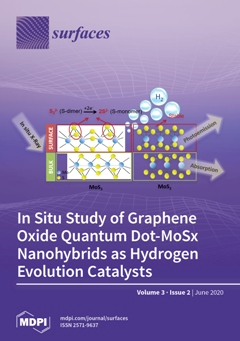Porous crystalline Ni-doped TiO
2 films were produced using DC plasma electrolytic oxidation in refrigerated H
2SO
4 aqueous solutions containing NiSO
4. The crystalline phase structure consisted of a mixture of anatase and rutile, ranging from ~30 to ~80 wt
[...] Read more.
Porous crystalline Ni-doped TiO
2 films were produced using DC plasma electrolytic oxidation in refrigerated H
2SO
4 aqueous solutions containing NiSO
4. The crystalline phase structure consisted of a mixture of anatase and rutile, ranging from ~30 to ~80 wt % rutile. The oxide films obtained at low NiSO
4 concentration showed the highest photocurrent values under monochromatic irradiation in the UV-vis range, outperforming pure TiO
2. By increasing NiSO
4 concentration above a threshold value, the photoelectrochemical activity of the films decreased below that of undoped TiO
2. Similar results were obtained using cyclic voltammetry upon polychromatic UV-vis irradiation. Glow discharge optical emission spectrometry (GD-OES) analysis evidenced a sulfur signal peaking at the TiO
2/Ti interface. XPS spectra revealed that oxidized Ni
2+, S
4+ and S
6+ ions were included in the oxide films. In agreement with photocurrent measurements, photoluminescence (PL) spectra confirmed that less intense PL emission, i.e., a lower electron-hole recombination rate, was observed for Ni-doped samples, though overdoping was detrimental.
Full article





